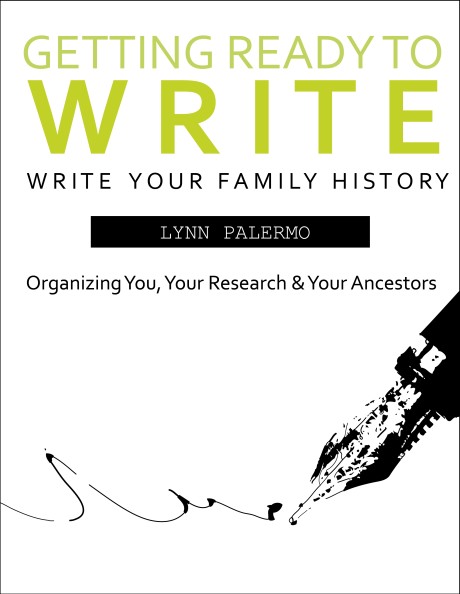How to Find the Motivation Behind the Goal
1 thought on “How to Find the Motivation Behind the Goal”
Comments are closed.
Related Post

What Kind of Family History Should I Write?What Kind of Family History Should I Write?
Before you begin to write your family history stories, you have a couple of decisions to make. One of those decisions: What kind of nonfiction narrative do I wish to write?
Family History Narrative Using Third Person
In this format your ancestor is the main character of your story, he has a conflict in his life, and he overcomes obstacles towards a resolution. He has a goal, and the obstacles are keeping him from that aim. This objective may take many shapes, emigration, finding a job, surviving a war, starting a family, owning land, love, fortune, fame. The list is as plentiful as our ancestors. The story is the journey to overcome the obstacles standing in the way of the goal. The story serves as a vehicle to share your family history research in an entertaining format rather a dry summary of facts.
Family History Memoir Using First Person
You as the storyteller and your ancestor, as the main protagonist, share the story. Your ancestor struggles with a conflict towards an end goal, much like in the first-person narrative above. In addition, you, the narrator struggles to find records or understand decisions your ancestors made, uncover a family secret or dispel folklore and correct misinformation. This format provides you with the opportunity to reflect, offer an opinion, and share your theories and speculations.
 The two stories, your genealogical journey, and your ancestor’s story are weaved together to create an engaging tale for your readers.
The two stories, your genealogical journey, and your ancestor’s story are weaved together to create an engaging tale for your readers.
Both formats will enlist the help of narrative nonfiction to craft those stories.
You’ll often hear me refer to the tools of creative nonfiction or narrative nonfiction. Creative nonfiction is the genre closest to fiction in its structure, but unlike fiction, in that, every detail must be factually true.
Lee Gutkind, nonfiction writer, and author of You Can’t Make This Stuff Up, sums it up best.
“ The words “creative” and “non?ction” describe the form. The word “creative” refers to the use of literary craft, the techniques ?ction writers, playwrights, and poets employ to present non?ction—factually accurate prose about real people and events—in a compelling, vivid, dramatic manner. The goal is to make non?ction stories read like ?ction so that your readers are as enthralled by fact as they are by fantasy.”
Your job as a family history writer is to tell and educate the reader while at the same time entertaining them. Many may write family history using nonfiction to present their research. However, the use of creative nonfiction offers the writer the ability to use a narrative arc, with scenes, setting, characterization and description to engage the reader in the story. The goal is to help your reader make an emotional connection with your ancestor through your words.
You still need extensive research to support your story. You remain faithful to the facts, but in using the tools of creative nonfiction, you give a rich, engaging and entertaining story that will capture the interest of your family. It is no longer enough to offer a narrative summary and hope someone will read it. We must deliver a story that brings the reader along on a journey.

Identify the Best Stories Hidden in Your Family History ResearchIdentify the Best Stories Hidden in Your Family History Research
Everybody has a story. That’s true. But no question some stories are better than others. Why? Because they are built around great conflict. The bigger the battle, the bigger the story. When it comes to writing stories that will entertain and engage your family you want to seek out stories that provide conflict to the reader. Give your readers a story filled with struggle, and they will want to learn more.
Sometimes, as writers, we struggle to identify this conflict in our ancestor’s life. On the surface, our ancestor’s life seems boring and mundane. However, if you take a few minutes before you begin to write you might be surprized at what you will find. Once you find a little conflict your job of writing an engaging and entertaining family history just got easier.
Here are some tips on how to help you find the conflict in your ancestor’s life that you can in turn structure your story around.
-
Look for Major Change
When human beings go through change, there is generally conflict. That conflict might come in the way of people who don’t want to change or refuse to change. Others might change reluctantly and find it very stressful. What kinds of change can we see in our family history research? Look for ancestors who are forced to change jobs, or must leave their country, or are sent away to school or forced into a marriage. Perhaps a woman who has had a father or husband to lean on all her life, only to lose them and must provide for herself and children. Where there is change, there is generally both inner and outer conflict as our ancestors attempt to deal with the change.
-
Look for Major Accomplishments
Another excellent method of looking for conflict in an ancestor’s life is to seek out any significant accomplishments your ancestor had in their life. For example, purchasing land particularly if they were locked in a social status that prevented it. Another example may be acquiring an education, or having children, or building a successful business. Once you’ve identified the accomplishment look at the obstacles that an ancestor faced in achieving that accomplishment. A woman who wants a family may find herself struggling with finding an appropriate husband and then only to have multiple miscarriages before finally having a child. Few of us achieve great things without having to jump through some hoops and overcome a few obstacles. Shape your story around those challenges on the path to finally acquiring their goal and you have an entertaining family history story.
-
Seek out Motivations
Everything we do in our life is generally motivated by something in our past. We may realise it, we may not. We rarely do anything, make any change, or seek out any goal in our life without it being driven by something in our past. For example, if your ancestor emigrated, why? What motivated this emigration? Perhaps it was poverty, maybe it was the fear of war, maybe it was certain conscription into the army. Seek out the motivations behind your ancestor’s actions, and you will often find a conflict they have grappled with and that has eventually driven the choices in their life. Shape your story around these motivations and your readers will be glued to your story to the very end.
-
Look for Actions that Took Place Around or Because of Historical Events
Was your ancestor’s life affected by local, regional or world events? These events may have presented them with conflict. For instance, did a World War present conflict for an ancestor? We’re they a conscientious objector, or perhaps troops marched through their town changing their lives forever? We’re they conscripted? Sometimes conflict is thrust upon our ancestors by outside events they had no control over. Look for how a historical event propelled great conflict into your ancestor’s life and altered its projection forever.
-
Look for ‘What If’s’
What would have happened if…? If my ancestor had not emigrated? If my ancestor had been conscripted into the army? If we look at our ancestor’s life from the perspective of a ‘what if’ then it can often show some struggles and conflicts that our ancestors faced in their life. When looking for conflict in our ancestor’s life, it might be buried in what they managed to avoid. Sometimes I hear family historians say, nothing significant happened in my ancestor’s life. There is no conflict. It may appear as if there was no conflict because your ancestor managed to avoid being caught up in such struggles. Look at the choices they made and the ‘what ifs.’ What if they hadn’t made this decision or taken that option, you might be surprised at what you find. It’s not that the conflict didn’t exist, your ancestor may have been one step ahead of the conflict.
Take a look at your family history research using the 5 tips above and you might just discover some amazing family history stories waiting to be written.
Not sure where to look to find the motivation for my ancestor to leave his home and come to Prince Edward Island.